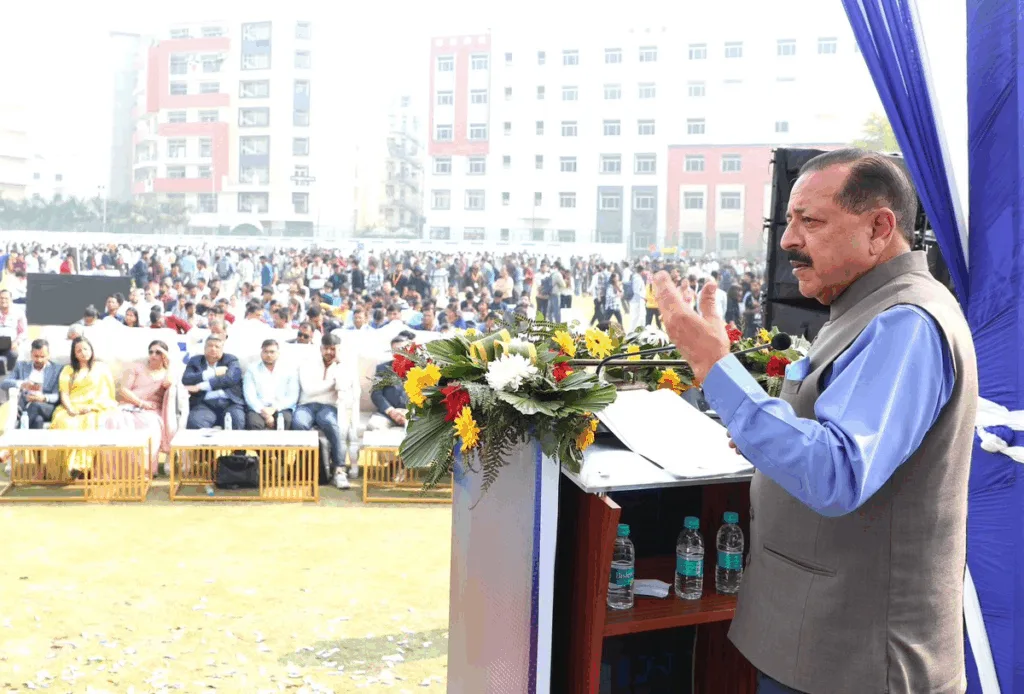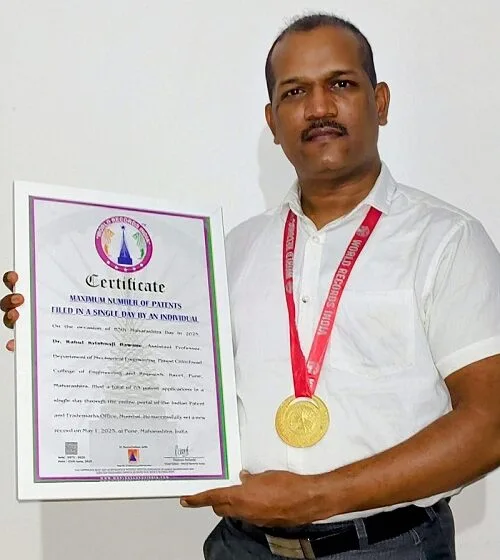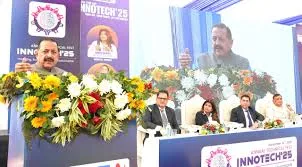India’s innovation story just got a major upgrade. The country has emerged as the world’s 6th largest patent filer with over 64,000 patents, with more than 55% filed by resident Indian innovators—a dramatic shift from the days when Indian researchers relied heavily on foreign institutions for validation and support.
Table of Contents
India’s Innovation Surge: By The Numbers
The country has climbed from rank 81 to rank 38 in the Global Innovation Index, an extraordinary leap that reflects more than a decade of focused policy reforms and infrastructure building.
India’s Patent Filing Progress
| Metric | Achievement | Significance |
|---|---|---|
| Global Patent Rank | 6th Worldwide | Up from outside top 10 |
| Total Patent Filings | 64,000+ | Record high for India |
| Resident Innovator Share | 55%+ | Majority now domestic |
| Global Innovation Index | Rank 38 | Jumped from Rank 81 |
| Key Milestones | Chandrayaan-3, DNA vaccine | World-class achievements |
What Changed? The Homegrown Innovation Revolution
This marks a sharp departure from the earlier trend of innovators depending on foreign institutions for research, mentorship, and project completion. Indian inventors are now choosing to develop their ideas domestically, thanks to improved infrastructure, funding access, and mentorship opportunities.

Union Minister Dr. Jitendra Singh, addressing the INNOTECH’25 tech fest, emphasized that this shift demonstrates the emergence of a “most compatible milieu at home,” enabled by sustained policy interventions, incentives for research, and an enabling environment.
What was missing before—policy support, institutional backing, venture capital, and innovation-friendly regulations—has been systematically addressed. Young Indian innovators can now pursue cutting-edge research and file high-value patents without leaving the country.
The Science Behind The Success
India’s patent surge isn’t happening in isolation. The country achieved landmark milestones such as Chandrayaan-3, development of the world’s first DNA vaccine, indigenous antibiotics, and successful gene therapy trials. These achievements represent India’s growing scientific capacity and global leadership in diverse fields.
The Department of Science & Technology (DST) plays a crucial role through initiatives like:
- INSPIRE fellowships for young scientists
- MANAK awards for grassroots innovators
- Dedicated programs for women and tribal communities in science
- Vaibhav initiative connecting overseas Indian researchers with domestic institutions
For more insights on how technology is transforming India’s innovation landscape, explore our comprehensive tech coverage at TechnoSports.
Beyond Government Jobs: The Startup Revolution
In rapidly transforming India, entrepreneurship, startups, skilling, and applied sciences offer far more opportunities than traditional dependency on government jobs, according to Dr. Singh.
Government schemes like Mudra, PM-Svanidhi, and PM-Vishwakarma have democratized access to funding and mentorship, enabling innovators without advanced degrees to pursue their entrepreneurial dreams.
The National Education Policy (NEP) 2020 has further liberated students by allowing subject changes, multidisciplinary learning, and aptitude-based career paths—breaking traditional academic rigidity.
Public-Private Partnership: The Secret Sauce
Events like INNOTECH’25 showcase India’s evolving innovation ecosystem where venture capitalists, industry leaders, researchers, and young entrepreneurs collaborate on a single platform. With more than 20 venture capitalists participating in the event, India’s next technological leap will be fueled by strong public-private partnerships.

This cross-pollination between academia, industry, and capital accelerates the translation of ideas into commercially viable products—essential for sustainable innovation growth.
What This Means For India’s Tech Future
India’s ascent to the 6th position in global patent filings signals more than statistical progress. It represents:
- Brain gain over brain drain: Innovators staying home instead of migrating
- Deep-tech entrepreneurship: Moving beyond service sector into product innovation
- Global competitiveness: Indian patents competing in international markets
- Self-reliance in R&D: Reduced dependency on foreign validation
Students showcased projects across artificial intelligence, machine learning, IoT, automation, biotechnology, and disaster management at INNOTECH’25, demonstrating the breadth of India’s innovation pipeline.
For official information on India’s science and technology initiatives, visit the Department of Science & Technology and Controller General of Patents websites.
Stay updated on India’s tech innovations and startup ecosystem by following TechnoSports for daily insights on emerging technologies and innovation trends.
FAQs
Q: How did India jump from rank 81 to rank 38 in the Global Innovation Index so quickly?
A: The remarkable jump happened over approximately a decade through consistent policy reforms, increased R&D spending (now 0.7% of GDP and growing), streamlined patent filing processes, creation of innovation hubs like Atal Incubation Centers, and government schemes providing accessible funding. The NEP 2020 educational reforms, combined with initiatives connecting overseas Indian researchers back to domestic institutions, created an ecosystem where innovation could flourish domestically rather than innovators seeking opportunities abroad.
Q: What advantages do Indian innovators now have when filing patents domestically versus internationally?
A: Filing patents in India now offers several advantages: faster processing times due to digitization of the patent office, lower filing costs compared to international applications, government fee rebates for startups and small entities (up to 80% reduction), access to domestic venture capital that understands local market dynamics, and direct government support through DST schemes. Additionally, India’s Paris Convention membership allows innovators to file domestically first, then claim priority when filing internationally within 12 months—protecting their IP while testing market viability at home.








